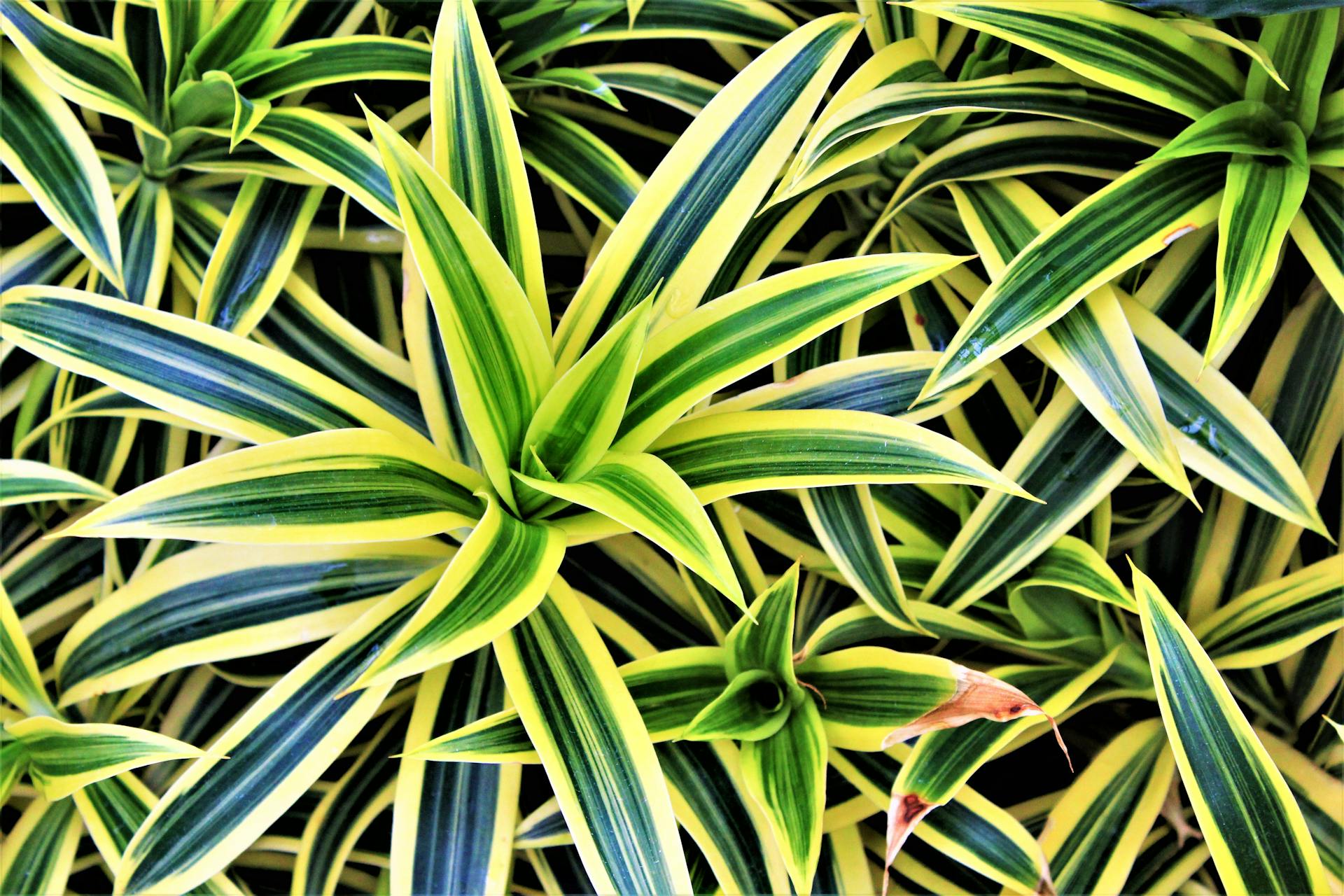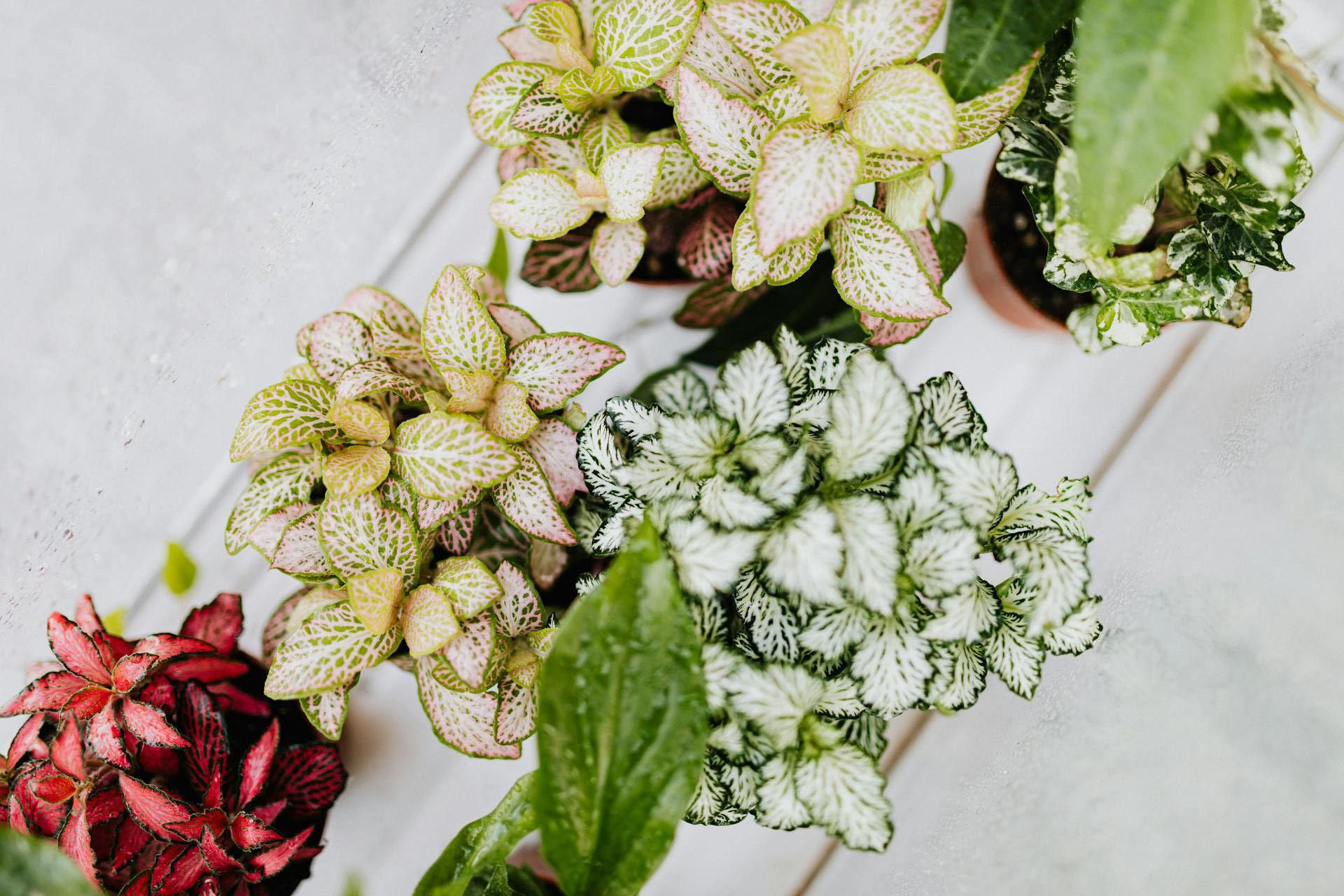If you’re looking for a houseplant that’s both striking and easy to care for, the Hoya Plant is the perfect choice. This gorgeous tropical vine, often called the “wax plant” for its shiny leaves, adds a touch of elegance to any space. Whether you hang it in a basket, let it climb a trellis, or style it as a tabletop feature, the Hoya Plant fits beautifully into your collection of indoor plants.
“A Hoya Plant isn’t just another houseplant—it’s a statement of nature’s artistry, thriving with just a little love and light.”
In this guide, we’ll dive into what makes the Hoya Plant so special. You’ll learn how to grow, propagate, and care for it, as well as tips for solving common problems. By the end, you’ll be ready to enjoy this stunning addition to your home and join the ranks of plant lovers who can’t get enough of Hoyas.
What is a Hoya Plant?
The Hoya Plant, scientifically known as Hoya carnosa, belongs to the Apocynaceae family, a group of tropical and subtropical plants. Commonly called the “wax plant” or “porcelain flower,” it is adored for its thick, glossy leaves and fragrant, star-shaped flowers that bloom in charming clusters.
This perennial vine is a favorite among enthusiasts of indoor plants due to its adaptability and low-maintenance nature. When grown indoors, the Hoya Plant typically reaches a mature size of 2–4 feet, with trailing vines that can extend much longer. It thrives in bright, indirect sunlight, mimicking its natural tropical environment.
Compared to many other indoor plants, the Hoya Plant is forgiving and requires minimal upkeep. While it prefers high humidity levels of 60–80%, it can adapt to average indoor conditions. For watering, allow the top inch of soil to dry out before watering again, making it a fantastic choice for busy plant parents. Additionally, the Hoya Plant is considered non-toxic, making it a safe addition to households with pets or children.
Here’s a quick look at the key details about the Hoya Plant:
| Attribute | Details |
|---|---|
| Scientific Name | Hoya carnosa |
| Common Name | Wax Plant, Porcelain Flower |
| Plant Type | Perennial Vine |
| Family | Apocynaceae |
| Mature Size | 2–4 feet indoors, longer vines possible |
| Light Requirements | Bright, indirect sunlight |
| Watering Needs | Allow the top inch of soil to dry out |
| Humidity Preferences | 60–80%; adaptable to lower levels |
| Toxicity | Non-toxic to humans and pets |
Types of Hoya Plant
Hoya Plants come in a wide variety of species, each offering unique features that make them special. Here are some of the most popular types to consider for your indoor garden:
Hoya Carnosa
This classic variety is one of the most common Hoyas. Known for its waxy, deep-green leaves, it produces clusters of fragrant, star-shaped flowers in shades of pink or white.
Hoya Pubicalyx
A fast-growing variety, Hoya Pubicalyx is loved for its long, slender leaves and dark pink or maroon blooms. It’s a hardy plant that thrives even with minimal care.
Hoya Obovata
Recognized by its round, speckled leaves, this variety has a unique charm. Its flowers are pale pink with a darker center, adding a subtle beauty to any indoor space.
Hoya Australis
With thick, glossy leaves and clusters of creamy white flowers, Hoya Australis is a favorite for its easy care and fast growth.
Hoya Linearis
This trailing variety features thin, soft, green leaves that resemble a curtain of greenery. Its delicate white flowers are lightly scented and add a whimsical touch.
Ideal Growing Conditions for Hoya Plant
To help your Hoya Plant thrive, it’s important to replicate its natural tropical environment. These adaptable plants are low-maintenance but have specific preferences for light, temperature, humidity, and soil that will maximize their growth and beauty.
Light Requirements for Hoya Plant
The Hoya Plant loves bright, indirect sunlight. It’s best to place it near an east- or south-facing window, where it can enjoy soft, filtered light. Avoid exposing it to direct sunlight for long periods, as this can scorch the leaves. If natural light is insufficient, consider using grow lights to mimic the conditions Hoyas need to flourish, especially in homes with limited sunlight or during winter.
Temperature and Humidity Preferences
Hoyas thrive in warm temperatures, ideally between 60–80°F (15–27°C). Avoid placing them near cold drafts or heat sources like radiators, as sudden changes in temperature can stress the plant.
When it comes to humidity, the Hoya Plant prefers 60–80%, but it can adapt to average indoor humidity levels. To boost humidity, especially in dry climates or during winter, you can mist the plant occasionally, use a humidifier, or place a tray of water nearby.
Best Soil and Potting Mix for Hoya Plant
A well-draining potting mix is essential for the Hoya Plant. They don’t like sitting in waterlogged soil, which can lead to root rot. An ideal mix includes components like orchid bark, perlite, and peat moss, providing the perfect balance of moisture retention and drainage.
Use a pot with drainage holes to prevent water buildup, and avoid heavy soils that can compact over time. Repot the plant every 2–3 years or when it becomes root-bound to ensure healthy growth.
How to Plant and Propagate Hoya Plant
The Hoya Plant is not only easy to care for but also simple to propagate. Whether you’re starting with a new plant or expanding your collection, knowing how to plant and propagate this tropical beauty will ensure its long-term success.
Best Time to Plant Hoya Plant
Spring and early summer are the best times to plant or repot a Hoya Plant. During this period, the plant enters its active growing phase, allowing it to establish strong roots and adapt to its new environment quickly. Avoid planting during dormancy in fall or winter, as growth slows and recovery may take longer.
Propagation Methods for Hoya Plant (e.g., cuttings, division)
Hoya Plants can be propagated in a few ways, with stem cuttings being the most common and effective method. Here’s a quick overview:
- Stem Cuttings: Cut a healthy stem with 2–3 nodes. Place it in water or directly in soil for rooting.
- Division: Separate a larger, mature plant into smaller segments, ensuring each has a healthy root system.
- Air Layering: Wrap a node with moist sphagnum moss while still attached to the plant. Once roots form, you can cut and pot the new section.
Step-by-Step Propagation Guide
- Choose a Healthy Stem: Identify a strong, healthy stem with 2–3 nodes and several leaves. Use a clean pair of pruning shears or a sanitized knife to make a neat cut just below the lowest node.
- Prepare the Cutting: Remove the leaves near the bottom of the stem, leaving the nodes exposed for rooting.
- Rooting the Cutting:
- Water Propagation: Place the cutting in a container with fresh water, ensuring the nodes are fully submerged. Regularly replace the water every few days to keep it clean.
- Soil Propagation: Dip the cut end in a rooting hormone (optional) before planting it in a pot filled with a moist, well-draining soil mix. Cover the nodes lightly with soil.
- Maintain Humidity: Cover the cutting with a clear plastic bag or place it in a humid area to simulate a greenhouse effect.
- Wait for Roots: Roots will typically develop within 2–4 weeks. When they’re about an inch long, carefully transplant the cutting into a pot with fresh soil.
Propagating Hoya Plants is a fun and rewarding process. In no time, you can grow your own collection of these stunning indoor plants or share them with fellow plant lovers.
How to Care for Hoya Plant
Caring for a Hoya Plant is straightforward, making it an excellent choice for beginners and seasoned plant enthusiasts alike. With the right approach to watering, feeding, grooming, and repotting, your Hoya will thrive and reward you with vibrant leaves and fragrant blooms.
Watering Guidelines for Hoya Plant
A frequent mistake when caring for Hoya Plants is giving them too much water. These plants thrive when the soil is allowed to dry out partially between waterings. Check the top 1–2 inches of soil—if it feels dry, water the plant. During its active growing season (spring and summer), Hoyas typically need more frequent watering, but in fall and winter, reduce the frequency to avoid soggy soil that could harm the roots.
Always water with room-temperature water, and use pots with drainage holes to prevent water from pooling at the bottom. While consistent care is ideal, Hoyas are resilient and can bounce back if you occasionally miss a watering.
Fertilization Schedule
Feeding your Hoya Plant regularly during its growing months will help it thrive. Apply a balanced, water-soluble fertilizer once every 4–6 weeks in spring and summer. Look for a fertilizer with an NPK ratio of around 10-10-10 or similar to support both lush foliage and abundant blooms.
Avoid using too much fertilizer, as overfeeding can cause salts to build up in the soil, which might damage the roots. Occasionally flush the soil with plain water to remove excess salts and keep the plant healthy.
Pruning and Grooming Tips for Hoya Plant
Pruning helps keep your Hoya Plant tidy and encourages new growth. Use sterilized pruning shears to trim off dead, discolored, or overgrown stems to maintain its shape.
Be cautious not to cut the flower spurs—the small woody stems where flowers develop—because these spurs will bloom repeatedly. To keep the leaves looking vibrant and healthy, gently wipe them with a damp cloth to remove dust buildup.
Repotting Instructions
Hoya Plants don’t need frequent repotting and often prefer to stay slightly root-bound. However, if the roots are outgrowing the pot or circling around the edges, it’s time to repot. This is typically necessary every 2–3 years.
The ideal time to repot is in spring when the plant begins its active growth period, allowing it to adjust more easily to the new soil and pot. Choose a pot only 1–2 inches larger than the current one, and use a fresh, well-draining soil mix. Handle the roots carefully to minimize stress during the transition.
Common Problems with Hoya Plant and How to Solve Them
Even though Hoya Plants are hardy and low-maintenance, they can encounter a few challenges if their care requirements aren’t met. From pest infestations to environmental issues, here’s how to address the most common problems and keep your plant thriving.
Pest Identification and Management
Hoyas are generally pest-resistant, but they can occasionally attract common houseplant pests like:
- Mealybugs: Small, white, cotton-like masses found on stems and leaves.
- Spider Mites: Tiny, reddish-brown pests that create fine webs on the plant.
- Aphids: Small, pear-shaped insects that cluster on new growth or undersides of leaves.
Solution:
- Keep the infested plant separate from others to stop pests from spreading.
- Manually remove pests by wiping the leaves with a damp cloth or rinsing them thoroughly.
- Treat the plant with neem oil or insecticidal soap, reapplying approximately once a week until the pests are gone.
Disease Prevention and Treatment for Hoya Plant
Most diseases affecting Hoya Plants result from overwatering or poor air circulation. Here are the two most common issues:
- Root Rot: This fungal issue develops when the plant’s roots are left in overly saturated soil for too long. Signs include yellow leaves, mushy or decayed roots, and an unpleasant smell.
- Fungal Leaf Spots: Brown or black spots appear on leaves due to high humidity and poor airflow.
Solution:
- For root rot: Remove the plant from its pot, trim off all damaged roots, and repot in fresh, well-draining soil. Modify your watering routine to avoid saturating the soil in the future.
- For fungal leaf spots: Increase ventilation around the plant and avoid wetting the leaves during watering. If necessary, apply a fungicide to control the problem.
Troubleshooting Common Issues with Hoya Plant
- Yellowing Leaves: This issue usually arises from excessive watering or a nutrient deficiency. Allow the soil to dry out between waterings and fertilize during the growing season to support healthy foliage.
- Wilting: Wilting can indicate underwatering, root damage, or heat stress. Check the soil moisture level and inspect the roots to identify the cause.
- No Blooms: A lack of flowers is often due to insufficient bright, indirect sunlight. Move your Hoya to a brighter location and ensure it is receiving proper care to encourage blooming.
With a little care and attention, these issues are easy to resolve, allowing your Hoya Plant to thrive and remain a stunning centerpiece in your collection of indoor plants.
Benefits and Uses of Hoya Plant
The Hoya Plant isn’t just a stunning houseplant; it also offers several practical benefits and versatile uses. Whether you’re seeking to enhance your home’s aesthetics, improve air quality, or add a touch of symbolism to your indoor garden, the Hoya Plant delivers.
Aesthetic and Decorative Uses of Hoya Plant
Hoya Plants are celebrated for their decorative appeal, thanks to their trailing vines, glossy leaves, and intricate, star-shaped flowers. These features make them an excellent choice for:
- Hanging Baskets: Let the vines cascade gracefully for a striking visual effect.
- Trellises or Moss Poles: Train the vines to climb, adding height and structure to your indoor plant arrangement.
- Centerpieces: A compact Hoya in a stylish pot can serve as a unique focal point on shelves, desks, or tables.
Their ability to thrive in small spaces and adapt to different styling options makes Hoyas a must-have in any collection of indoor plants.
Air Purification Benefits
Like many houseplants, Hoya Plants contribute to better indoor air quality. They help filter out toxins from the air while releasing oxygen, making your home a healthier and fresher environment.
Though not as extensively studied as some other air-purifying plants, Hoyas are part of the same group of plants known to improve indoor air quality by reducing pollutants like benzene and formaldehyde.
Cultural or Symbolic Significance
In some cultures, Hoya Plants symbolize love, warmth, and friendship, making them a popular gift for loved ones. Their long-lasting blooms and lush foliage represent endurance and loyalty, aligning with their reputation as resilient and rewarding houseplants.
FAQ
Q1: How often should I water my Hoya Plant?
Hoya Plants should be watered when the top 1–2 inches of soil feel dry to the touch. During the growing season (spring and summer), this is typically every 7–10 days. In the dormant period (fall and winter), reduce watering to every 2–3 weeks. Always ensure the pot has good drainage to prevent overwatering.
Q2: Why isn’t my Hoya Plant blooming?
If your Hoya Plant isn’t producing flowers, it might not be receiving enough bright, indirect sunlight. Ensure it gets at least 6–8 hours of light daily. Overwatering or excessive fertilization can also hinder blooming. Patience is key, as Hoyas often bloom once they’re mature and well-established.
Q3: Can Hoya Plants grow outdoors?
Yes, Hoya Plants can grow outdoors in warm climates, typically in USDA zones 10–12. They prefer shaded areas with bright, indirect light and high humidity. In cooler climates, they’re best kept as indoor plants or moved indoors during colder months.
Q4: Are Hoya Plants toxic to pets?
Hoya Plants are considered non-toxic to cats, dogs, and humans, making them a safe choice for households with pets or children. However, it’s still a good idea to prevent pets from chewing on the leaves, as ingestion could cause mild stomach upset.
Q5: How do I propagate a Hoya Plant?
The most common method of propagation is using stem cuttings. Cut a healthy stem with 2–3 nodes, remove the lower leaves, and place it in water or soil. Keep it in a warm, humid environment, and roots will typically develop within 2–4 weeks. Once rooted, transfer the cutting to its own pot with well-draining soil.
Conclusion
The Hoya Plant is a stunning addition to any collection of indoor plants. With its glossy leaves, fragrant flowers, and low-maintenance care, it’s perfect for both beginners and seasoned plant enthusiasts.
By providing proper light, watering, and occasional pruning, your Hoya Plant will thrive and beautify your space. This versatile plant is a must-have for anyone looking to enhance their home with greenery.
Start your journey with a Hoya Plant today and enjoy its timeless charm.













